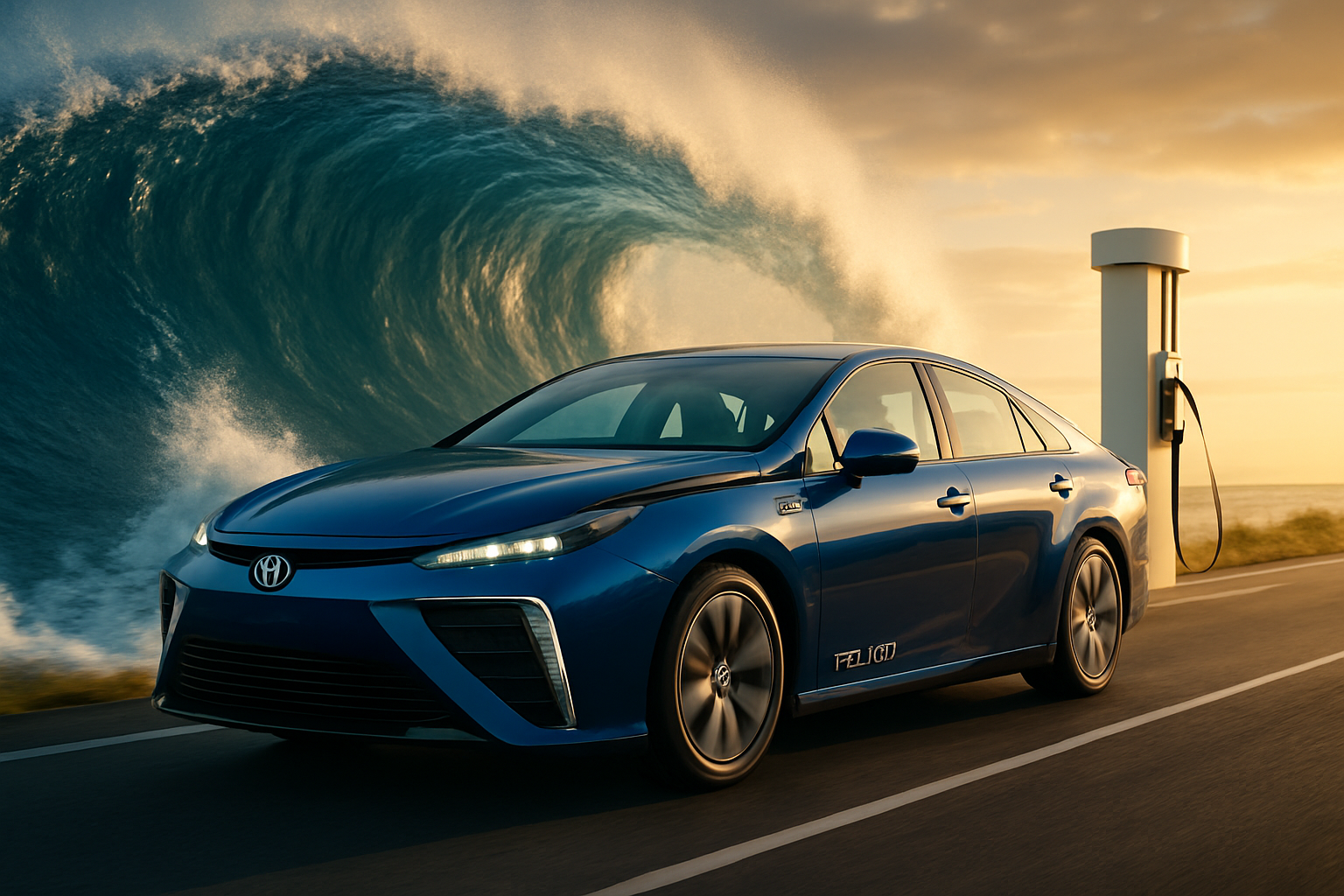Hydrogen Fuel Cell Vehicles: The Next Frontier of Clean Mobility
In the ever-evolving landscape of automotive technology, hydrogen fuel cell vehicles (FCVs) are emerging as a promising solution for sustainable transportation. This cutting-edge technology harnesses the power of hydrogen to create electricity, propelling vehicles forward with zero emissions. As the world grapples with climate change and the need for cleaner energy sources, FCVs offer a glimpse into a future where our roads are populated by vehicles that leave nothing but water vapor in their wake.

A Brief History of Hydrogen in Automobiles
The concept of using hydrogen as a fuel source for vehicles dates back to the early 19th century. In 1807, François Isaac de Rivaz invented an internal combustion engine that used a mixture of hydrogen and oxygen as fuel. However, it wasn’t until the late 20th century that significant strides were made in hydrogen fuel cell technology for automobiles.
In the 1960s, General Motors developed the Electrovan, the world’s first hydrogen fuel cell vehicle. This prototype paved the way for future developments, although it would be decades before the technology became viable for mass production. The turn of the millennium saw increased interest and investment in hydrogen technology, with major automakers like Toyota, Honda, and Hyundai leading the charge.
The Mechanics of Fuel Cell Vehicles
At the heart of an FCV lies the fuel cell stack, where the magic happens. This stack consists of multiple fuel cells, each containing an anode, a cathode, and an electrolyte membrane. Hydrogen is fed into the anode side of the fuel cell, while oxygen from the air enters the cathode side. The hydrogen molecules are split into protons and electrons, with the protons passing through the electrolyte membrane and the electrons traveling through an external circuit, creating an electric current.
This electricity powers the vehicle’s electric motor, driving the wheels just like in a battery electric vehicle. The only byproduct of this process is water vapor, which is emitted through the exhaust. Additionally, many FCVs incorporate a battery to store excess energy and assist with acceleration, further improving efficiency.
Advantages of Hydrogen Fuel Cell Technology
One of the most significant advantages of FCVs is their quick refueling time. Unlike battery electric vehicles that can take hours to charge, hydrogen vehicles can be refueled in a matter of minutes, similar to conventional gasoline cars. This makes them particularly attractive for long-distance travel and commercial applications where downtime is costly.
FCVs also offer an impressive range, with some models capable of traveling over 400 miles on a single tank of hydrogen. This eliminates the range anxiety often associated with electric vehicles and makes FCVs a viable option for those who frequently travel long distances.
Furthermore, hydrogen fuel cells have a higher energy density than lithium-ion batteries, meaning they can store more energy in a smaller space. This characteristic makes them ideal for larger vehicles like buses and trucks, where battery weight and size can be limiting factors.
Challenges and Hurdles
Despite their potential, FCVs face several challenges that have hindered widespread adoption. The most significant hurdle is the lack of hydrogen refueling infrastructure. As of 2021, there were only a handful of hydrogen fueling stations in operation across the United States, mostly concentrated in California. This chicken-and-egg problem – where automakers are hesitant to produce FCVs without a refueling network, and fuel providers are reluctant to build stations without enough vehicles on the road – has slowed the technology’s growth.
Another challenge is the cost of producing hydrogen fuel cells and the vehicles themselves. While prices have decreased over the years, FCVs are still more expensive than their gasoline or battery electric counterparts. The production of hydrogen itself also presents challenges, as most hydrogen is currently produced using fossil fuels. However, efforts are underway to develop more sustainable production methods, such as using renewable energy to split water into hydrogen and oxygen through electrolysis.
The Future of Hydrogen Mobility
Despite these challenges, the future of hydrogen fuel cell vehicles looks promising. Governments worldwide are investing in hydrogen technology and infrastructure as part of their clean energy strategies. Japan, for instance, has set ambitious targets for FCV adoption and hydrogen station deployment, aiming to have 800,000 FCVs on its roads by 2030.
In the commercial sector, hydrogen is gaining traction as a solution for long-haul trucking and public transportation. Companies like Nikola and Hyundai are developing hydrogen-powered semi-trucks, while several cities around the world have already introduced hydrogen buses into their public transit fleets.
As technology advances and economies of scale come into play, the cost of FCVs and hydrogen production is expected to decrease significantly. This, coupled with growing environmental concerns and stricter emissions regulations, could pave the way for wider adoption of hydrogen fuel cell technology in the coming decades.
Conclusion
Hydrogen fuel cell vehicles represent a fascinating frontier in automotive technology, offering a clean, efficient, and potentially transformative solution to our transportation needs. While challenges remain, the progress made in recent years and the continued investment in this technology suggest that FCVs could play a significant role in our transition to a more sustainable future. As we continue to explore and refine this technology, we may find ourselves on the cusp of a hydrogen-powered revolution in mobility, one that could reshape our roads and our relationship with transportation for generations to come.





